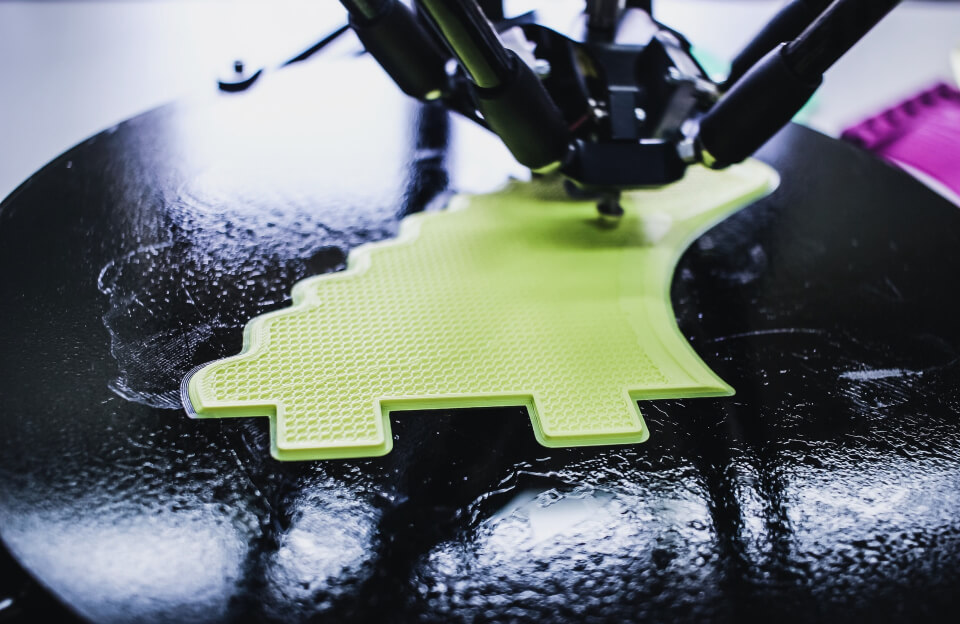By Priya Sharma, an Indian financial enthusiast dedicated to simplifying banking updates for you.
The banking landscape in India is evolving, and ICICI Bank, one of the country’s leading private lenders, has introduced significant changes to its ICICI Bank minimum balance requirements for new savings accounts. Effective from August 1, 2025, these updates have sparked discussions among customers, with some praising the move as a step toward premium banking and others questioning its accessibility. If you’re considering opening a new savings account or simply curious about what these changes mean, this guide breaks down everything you need to know about the ICICI Bank minimum balance rules, penalties, and alternatives. Let’s dive in!
- What Is the New ICICI Bank Minimum Balance Requirement?
- Why Did ICICI Bank Increase the Minimum Balance?
- How Is the ICICI Bank Minimum Balance Calculated?
- Penalties for Not Maintaining the ICICI Bank Minimum Balance
- How Does ICICI Bank Compare to Other Banks?
- What Does This Mean for You?
- Tips to Manage the ICICI Bank Minimum Balance
- Public Reaction to the ICICI Bank Minimum Balance Hike
- Is ICICI Bank Right for You in 2025?
- Conclusion: Navigating the ICICI Bank Minimum Balance in 2025
What Is the New ICICI Bank Minimum Balance Requirement?
ICICI Bank has raised the ICICI Bank minimum balance—officially termed the Monthly Average Balance (MAB)—for new savings accounts opened on or after August 1, 2025. The updated requirements are:
- Metro and Urban Areas: ₹50,000 (previously ₹10,000)
- Semi-Urban Areas: ₹25,000 (previously ₹5,000)
- Rural Areas: ₹10,000 (previously ₹2,500 or ₹5,000, depending on the branch)
These changes apply only to new, non-salary savings accounts. Existing account holders, salary account holders, pensioners, and those with Basic Savings Bank Deposit Accounts (BSBDAs) or PM Jan Dhan accounts are exempt from these higher ICICI Bank minimum balance thresholds. This move positions ICICI Bank as having the highest MAB requirement among major Indian banks, signaling a clear shift toward attracting a premium customer base.
Why Did ICICI Bank Increase the Minimum Balance?
The hike in the ICICI Bank minimum balance is part of a strategic push toward premiumization. Banking analysts suggest that ICICI aims to:
- Attract High-Net-Worth Customers: Higher balances encourage customers to engage with additional financial products like investments, insurance, or loans.
- Offset Operational Costs: Free digital services, branch maintenance, and compliance costs are rising, and higher MABs help banks sustain these services.
- Align with Global Standards: Private banks like ICICI are adopting models similar to multinational banks, focusing on profitability per account.
However, this has raised concerns about financial inclusion, especially as public sector banks like State Bank of India (SBI) have eliminated MAB requirements entirely since 2020.
How Is the ICICI Bank Minimum Balance Calculated?
The ICICI Bank minimum balance is calculated as the Monthly Average Balance (MAB), which is the average of your daily closing balances over a month. Here’s how it works:
- Sum Daily Balances: Add up the end-of-day balance in your account for each day of the month.
- Divide by Days: Divide the total by the number of days in the month (e.g., 30 or 31).
For example, if your account in a metro branch has ₹60,000 for 15 days and ₹40,000 for 15 days in a 30-day month:
- MAB = [(₹60,000 × 15) + (₹40,000 × 15)] ÷ 30 = ₹50,000
If the MAB falls below ₹50,000 in metro/urban areas, you’ll face penalties. This makes it crucial to plan your finances to maintain the required ICICI Bank minimum balance.
Penalties for Not Maintaining the ICICI Bank Minimum Balance
Failing to meet the ICICI Bank minimum balance triggers a penalty of 6% of the shortfall or ₹500, whichever is lower, charged monthly. For instance:
- If your MAB in a metro branch is ₹40,000 (shortfall of ₹10,000), the penalty would be 6% of ₹10,000 = ₹600, but capped at ₹500.
- These charges apply each month the MAB is not met, so regular monitoring is key.
Additionally, ICICI has revised other charges:
- Cash Transactions: Three free deposits/withdrawals per month up to ₹1 lakh cumulative. Beyond this, ₹150 per transaction or ₹3.5 per ₹1,000, whichever is higher.
- Third-Party Transactions: Capped at ₹25,000 per transaction.
- Cheque Returns: ₹200 for outward returns, ₹500 for inward returns (financial reasons).
- Non-ICICI ATM Transactions: In six metro cities (Mumbai, Delhi, Chennai, Kolkata, Bengaluru, Hyderabad), ₹23 per financial transaction and ₹8.5 per non-financial transaction after three free transactions monthly.
How Does ICICI Bank Compare to Other Banks?
The ICICI Bank minimum balance hike sets it apart from competitors. Here’s a quick comparison:State Bank of India (SBI): No MAB requirement since 2020, making it ideal for budget-conscious customers.
- HDFC Bank: ₹10,000 (metro/urban), ₹5,000 (semi-urban), ₹2,500 (rural).
- Axis Bank: ₹12,000 (metro/urban), ₹5,000 (semi-urban), ₹2,500 (rural).
- Kotak Mahindra Bank: Offers zero-balance options for select accounts like Kotak 811.
ICICI’s ₹50,000 MAB in urban areas is significantly higher, potentially pushing customers toward banks with lower or no MAB requirements, especially for those who find it challenging to maintain such a high ICICI Bank minimum balance.
What Does This Mean for You?
The new ICICI Bank minimum balance rules could impact your banking choices, especially if you’re opening a new account. Here’s how different groups might be affected:
- Salaried Employees: If your monthly income is around ₹33,000 (India’s average), maintaining ₹50,000 could be tough. Consider zero-balance accounts or public sector banks.
- Freelancers/Small Business Owners: Irregular incomes make it harder to maintain a high MAB. Budgeting tools or consolidating funds can help.
- Students/Pensioners: Exemptions for pensioners and BSBDAs offer relief. Check if you qualify for these accounts to avoid the ICICI Bank minimum balance requirements.
If maintaining ₹50,000 is impractical, explore alternatives like SBI’s zero-balance accounts or digital-first banks like Kotak 811.
Tips to Manage the ICICI Bank Minimum Balance
To avoid penalties and make the most of your ICICI savings account, try these strategies:
- To avoid penalties and make the most of your ICICI savings account, try these strategies:Set Balance Alerts: Use ICICI’s mobile app or SMS alerts to monitor your daily balance.
- Automate Transfers: Schedule monthly transfers to ensure your account stays above the ICICI Bank minimum balance.
- Consolidate Funds: Pool money from other accounts to maintain the required average.
- Opt for Zero-Balance Accounts: If the MAB is too high, switch to ICICI’s BSBDA or PM Jan Dhan accounts, which have no minimum balance requirements.
- Review Charges Annually: Bank policies change, so stay updated via ICICI Bank’s official website.
Public Reaction to the ICICI Bank Minimum Balance Hike
The ICICI Bank minimum balance increase has sparked strong reactions online. Posts on X show a mix of frustration and calls for RBI intervention, with some users labeling the policy “elitist” and planning to close their accounts. Others see it as a fair trade-off for premium services. This divide highlights the challenge of balancing profitability with financial inclusion in India’s diverse banking market.
The Worst Decision of ICICI Bank 😡#ICICIBank raises average minimum balance for savings a/c in metros & urban areas to Rs 50,000
— Anuj Prajapati (@anujprajapati11) August 9, 2025
Earlier it was Rs 10,000
Why the hell people put their money in accounts. Urban youth wants to invest those money not to sit dead in Bank… pic.twitter.com/FXfdJ27tk8
Is ICICI Bank Right for You in 2025?
The new ICICI Bank minimum balance rules reflect a shift toward premium banking, but they may not suit everyone. If you can maintain ₹50,000 in metro areas, you’ll enjoy benefits like free NEFT transfers and three complimentary cash transactions monthly. However, if the high MAB feels out of reach, consider:
- Public Sector Banks: SBI, Punjab National Bank, or Canara Bank offer no or lower MAB requirements.
- Digital Banks: Kotak 811 or Axis ASAP provide zero-balance options with robust digital features.
Before opening an account, compare terms and check ICICI’s official product page for the latest details.
Conclusion: Navigating the ICICI Bank Minimum Balance in 2025
The ICICI Bank minimum balance hike to ₹50,000 for new urban accounts is a bold move that sets a new benchmark in Indian banking. While it caters to affluent customers, it raises concerns about accessibility for the average Indian. By understanding the rules, penalties, and alternatives, you can make informed decisions about your banking needs. Whether you stick with ICICI or explore other options, staying proactive with your finances is key.For more banking updates and financial tips, visit Newrelease.in. Share your thoughts on the ICICI Bank minimum balance rules in the comments below!


